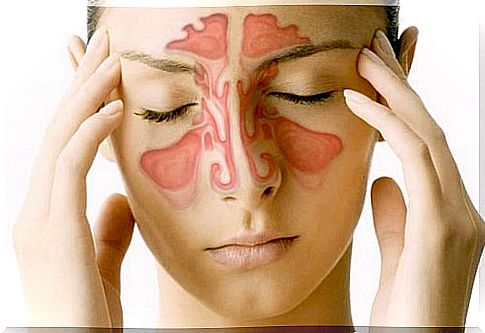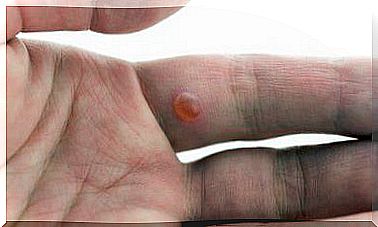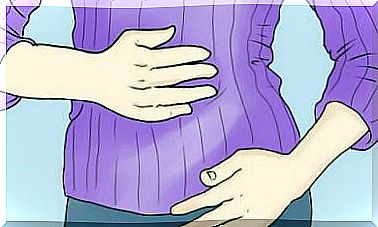Paranasal Sinuses: 5 Things We Should Know
The paranasal sinuses are responsible for humidifying and warming the air we breathe before it gets into our interior, as well as producing phlegm to avoid bacteria.

The paranasal sinuses are air-filled cavities located in the bones of the skull and whose function is multiple: they facilitate our breathing, phonation, smell and the regulation of internal temperature.
It is strange that we never pay attention to these structures in our body until some problem arises, pain or alteration.
Anyone who has suffered from sinusitis, for example, will undoubtedly know exactly where the paranasal sinuses are located.
These structures, in turn, produce a type of fluid in order to contain and protect us from certain bacteria and quite often this excess mucus ends up clogging the cavities and triggering inflammation.
This is such a common and troublesome process that affects thousands of people. This is one of the medical issues affecting these delicate and strange structures of our anatomy that we want to talk to you about today.
Below we will give you 5 pieces of information that you will surely enjoy knowing.
1. How many paranasal sinuses do we have?
We have a total of 8 paranasal sinuses, 4 on each side of the nose. Here is some interesting information:
Maxillary sinuses
- The maxillary sinus is the largest of all the paranasal sinuses.
- It has a pyramidal shape and a capacity of about 15ml.
- At birth, this sinus is very small, and it is not until the age of 8 or 9 that it widens to descend from the upper part of the nose downwards.
Frontal sinuses
- They are approximately 3cm high and 2.5cm wide. These are cavities separated by the inter-frontal partition.
- They are connected to the trigeminal nerve and it is one of the most painful when inflamed.
Ethmoid sinuses
This sinus is actually a set of ethmoidal alveoli, like small labyrinths formed in turn by the lacrimal bones.
Sphenoidal sinuses
- These sinuses are fully formed by the age of 14 or 15.
- They have a capacity of 7.5ml each.
2. What is in the paranasal sinuses?

We specified at the beginning of the article that there was only air in these cavities.
It should be noted that some paranasal and non-inflamed sinuses will have air in a large part of their hole. However, these spaces inside our face are not completely empty.
- The nasal and paranasal sinuses are coated with a type of respiratory mucosa.
- This mucous membrane is formed by a kind of epithelium.
- It is a very thin layer of mycotic cells that are well adhered to the bone or adjacent cartilage.
- Its function is multiple: on the one hand, it aims to improve the humidification and warming of the air before it enters our interior. In turn, these cells also produce “snot” in order to protect us from possible bacteria and foreign elements, so that they do not also enter our body.
3. Why do the paranasal sinuses become inflamed?
When we catch a cold or suffer from allergies, there is an excessive growth of bacteria and germs in the paranasal cavity, which produces a bacterial or viral infection.
The majority of paranasal sinus infections are viral and go away on their own in a short time.
However, this infection can sometimes intensify and produce 3 types of problems:
Acute sinusitis
Acute sinusitis is a very common problem associated with the common cold.
If the origin is viral, it will heal on its own within a few days, but if it is a bacterial infection, acute sinusitis can last up to four weeks.
Subacute sinusitis
In this case the problem is more serious and above all, annoying.
It is strongly linked to allergies, and these are processes that can last between two and three months.
They generally present:
- Constant mucus
- Headache
- Dizziness
- Light sensitivity
Chronic sinusitis
Chronic sinusitis is highly devastating for the person who suffers from it. They last more than 3 months and usually end with surgery.

4. Why are some people more prone to paranasal sinus infection?
We can all suffer from a paranasal sinus infection at some point. However, certain medical conditions and risk factors can increase this possibility.
Here they are :
- Have a deviated nasal septum
- Have nasal polyps
- Work in a polluted environment
- Living in a too polluted city
- Living in a house that is too humid or with too much mold
- Suffer from dental infections
- Have a weak immune system
- To smoke
5. How can I fight paranasal sinus infection?
The most recommended, if you suffer from paranasal inflammation that lasts for more than two weeks, is to see a doctor.
Once we have a correct diagnosis and concrete medical and pharmacological treatment, we can put in place simple home strategies that will help us heal.
Here are a few small examples:
- Salt water spray
- Mint and eucalyptus infusions and inhalations
- Rosemary infusions and inhalations
- Chopped radish and onion poultices
- Ginger and honey infusions
Finally, naps and rest will also go a long way in helping us strengthen our immune system so that we can deal with this infection.









